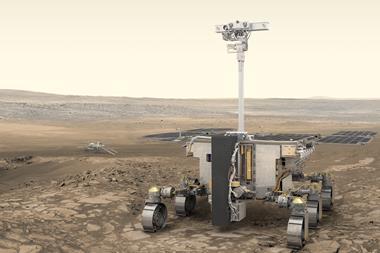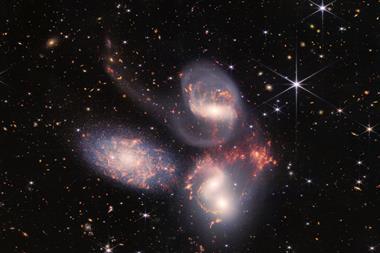Levels of potentially harmful organic compounds in the dust aboard the International Space Station (ISS) are higher than those found in US and western European homes. It is the first time persistent organic chemicals have been detected in a non-terrestrial environment, and the team that carried out the analysis says that the findings will inform future material choices for crewed spacecraft.
The ISS represents a unique indoor environment that humans have lived in for more than two decades. Particles do not settle in a microgravity environment, but instead stay airborne and drift based on ventilation patterns before depositing on surfaces and air intakes. That means that screens covering the ISS air filters accumulate debris and must be vacuumed weekly to maintain efficient filtration and avoid overtaxing the ventilation fans.
Scientists from the University of Birmingham, UK, and Nasa’s Glenn Research Center in the US measured concentrations of the target chemicals in dust collected from the ISS air filter screens in 2019.
The contaminants found in this ‘space dust’ include polybrominated diphenyl ethers (PBDEs), hexabromocyclododecane, brominated flame retardants, organophosphate esters, polycyclic aromatic hydrocarbons, polychlorinated biphenyls and perfluoroalkyl substances (PFASs).
While the concentrations of all these compound classes frequently exceeded the median values in indoor microenvironments in the US and western Europe, they were generally within the range found on Earth.
Tracing contamination sources
There are several potential sources of contamination on the ISS. Previous research shows that most of the aerosol emissions on the ISS are carbonaceous particles, of which human skin flakes are the largest proportion. The craft also houses many unique payload experiments that involve exotic materials, and so its vacuum dust may sometimes reflect higher concentrations of some compounds that are not typically airborne in the vessel.
Because spacecraft are vulnerable to fire, significant attention has been paid to the flammability of the ISS’s contents. Many of the materials used in its construction and operation are bespoke, but there are also numerous small, commercial components that likely contain fire retardants and other chemicals are onboard the ISS, the researchers note. They list examples like cameras, power tools, mp3 players, computer tablets, medical devices, and clothing.
High levels of ionising radiation can also cause materials to age more quickly than normal, including the breakdown of plastic goods into microplastics and nanoplastics that can become airborne in the microgravity environment.
While the concentrations of most PFASs in the ISS dust were within the same range as their concentrations in US house dust, perfluorooctanoic acid was present at a higher concentration. The researchers suggest this may reflect the application of waterproofing formulations of 3M’s fabric protector Scotchguard at various points during the ISS’s lifetime to prevent microbial growth.
In a statement on the University of Birmingham’s website, environmental chemist Stuart Harrad said that the team hopes its findings will guide the design and construction of future spacecraft. ‘Our findings have implications for future space stations and habitats, where it may be possible to exclude many contaminant sources by careful material choices in the early stages of design and construction,’ he said.
References
S Harrad et al, Environ. Sci. Technol. Lett., 2023, DOI: 10.1021/acs.estlett.3c00448

















No comments yet